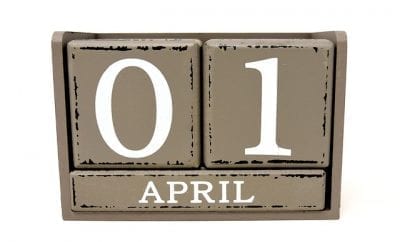
News
History of April Fools Day
Today is the day where people enjoy themselves pranking others or being pranked upon by others. Yes, it is the first day of April, April Fools Day. This tradition has been passed down for hundreds of years and kept strongly alive even today. But how far does the rabbit-hole go for it’s historical origin? The history of April Fools Day is cloaked in mystery to even experts of the subject.
Reports suggest that the most widely held belief is that its history originated in France in the 1500s during the reign of King Charles IX. During the sixteenth-century, France changed its calendar by moving its New Year’s week, March 25th – April 1st, to a single day on January 1st. This move was performed, according to sources, at the request of Pope Gregory XIII. The Pope requested a new calendar be made, the Gregorian Calendar, to replace their old Julian Calendar in order to match the Roman’s calendar. Those who had not gotten word yet of the holiday’s date change or refused to change their traditional ways would continue to celebrate New Years during Spring and thus be deemed as “April fools”.
Those who were labeled as “fools” were then subjected to a variety of ridicules. Some of the mockery included people being sent on fake errands, or receiving invitations to parties that were nonexistent, or a variety of other practical jokes.
Sources say that those who fall for these pranks becomes known as the “poisson d’avril”, or April Fish,” because a young and gullible fish is caught easily. There are those who do not believe in this theory, such as Alex Boese, the curator of The Museum of Hoaxes. They explain that there is not enough hard historical evidence to prove this theory, and that it remains to be only that, a theory.
In his interview with National Geographic in 2008, Boese discusses that his theory is the Fools Day came out during age-old European festivals for th e Spring renewal. During the festivals it was common practice to pull pranks and hide one’s identity. Despite its controversial origins, it had spread like wildfire through Europe and eventually the rest of the world.
e Spring renewal. During the festivals it was common practice to pull pranks and hide one’s identity. Despite its controversial origins, it had spread like wildfire through Europe and eventually the rest of the world.
Despite the history, April Fool’s Day is celebrated in a variety of different ways around the globe. According to sources, many different countries still celebrate it in their own unique style. In Scotland, the country celebrates the holiday in two days instead of just one where the second day is known as “Taily Day.” Many of its pranks involve things happening to one’s buttocks.
For those who enjoy the “Kick-Me” signs can thank Scotland for its origins can be traced back to Scotland’s history of this holiday observance. In Rome, it is commonly referred to as “Roman Laughing Day.” Those who have been pranked upon by others in England are “gobby” and “noodle” and the jokes are only played in the morning, otherwise it is bad luck. In India, people play jokes and smear colors on others, while in Portugal people celebrate it by throwing flour at their friends.
These practical jokes have become such a common practice that this holiday is remembered year after year with real joy and enthusiasm. It will be interesting what this year’s jokes will be throughout the world.





1 Comment